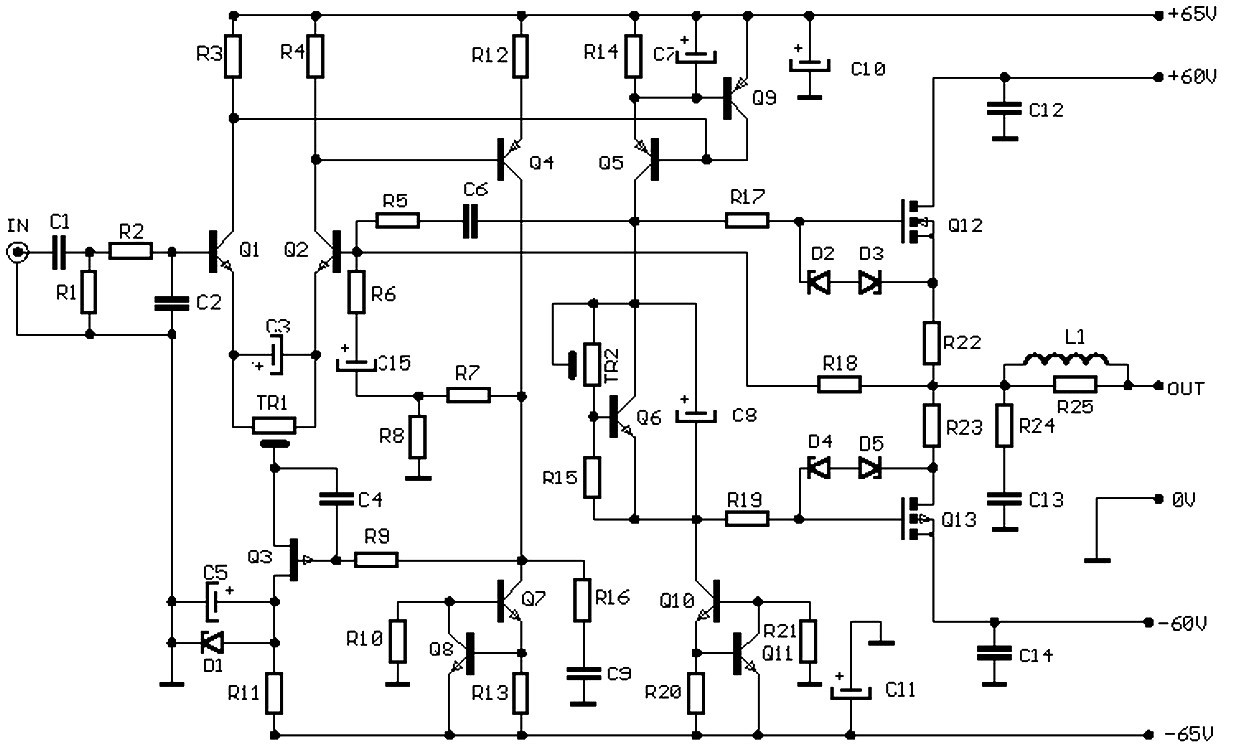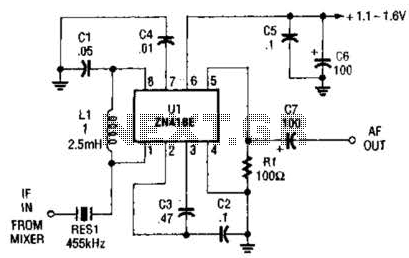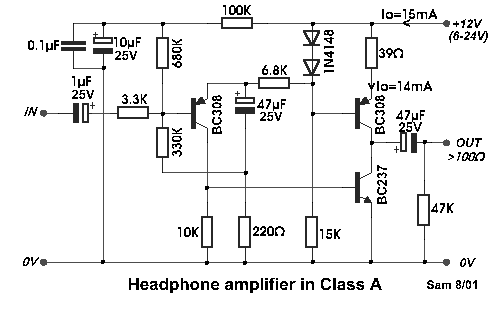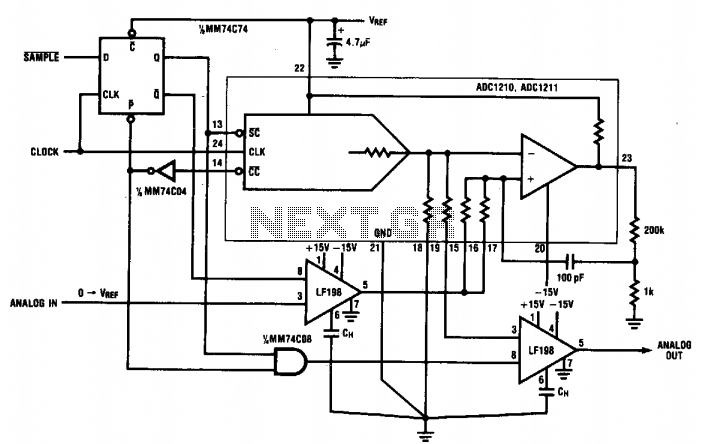
100W FET audio amplifier

This balanced preamplifier circuit is designed to amplify low-level audio signals (from 0 dB to 20 dB) and features balanced inputs and outputs. The design utilizes standard components that are readily available in the electronics market.
The balanced preamplifier circuit serves to enhance the quality of audio signals by reducing noise and interference, making it ideal for professional audio applications. The circuit typically incorporates operational amplifiers (op-amps) configured in a differential mode to achieve the desired amplification while maintaining a balanced signal path.
The input stage of the preamplifier accepts balanced audio signals, often from sources such as microphones or musical instruments. The balanced configuration helps to cancel out common-mode noise, which is particularly beneficial in environments with significant electromagnetic interference. The op-amps are selected based on their low noise characteristics and high input impedance to ensure minimal loading on the audio source.
The output stage of the circuit also maintains a balanced signal, allowing for compatibility with other audio equipment, such as mixers and amplifiers. This design not only improves signal integrity but also enables longer cable runs without degradation of audio quality.
Power supply considerations are critical for the operation of the preamplifier. Typically, a dual power supply (positive and negative voltages) is used to provide the necessary headroom for the op-amps, ensuring that the output signal remains linear and distortion-free across the intended range of operation.
In summary, this balanced preamplifier circuit is a robust solution for amplifying low-level audio signals while preserving signal integrity and reducing noise, making it an essential component in high-fidelity audio systems.This Balanced pre amp circuit is designed to amplify a little line-level audio signal (from 0 dB to 20 dB), and has balanced inputs and outputs. The scheme uses only conventional components, you`ll have no trouble finding in any electronics. 🔗 External reference
The balanced preamplifier circuit serves to enhance the quality of audio signals by reducing noise and interference, making it ideal for professional audio applications. The circuit typically incorporates operational amplifiers (op-amps) configured in a differential mode to achieve the desired amplification while maintaining a balanced signal path.
The input stage of the preamplifier accepts balanced audio signals, often from sources such as microphones or musical instruments. The balanced configuration helps to cancel out common-mode noise, which is particularly beneficial in environments with significant electromagnetic interference. The op-amps are selected based on their low noise characteristics and high input impedance to ensure minimal loading on the audio source.
The output stage of the circuit also maintains a balanced signal, allowing for compatibility with other audio equipment, such as mixers and amplifiers. This design not only improves signal integrity but also enables longer cable runs without degradation of audio quality.
Power supply considerations are critical for the operation of the preamplifier. Typically, a dual power supply (positive and negative voltages) is used to provide the necessary headroom for the op-amps, ensuring that the output signal remains linear and distortion-free across the intended range of operation.
In summary, this balanced preamplifier circuit is a robust solution for amplifying low-level audio signals while preserving signal integrity and reducing noise, making it an essential component in high-fidelity audio systems.This Balanced pre amp circuit is designed to amplify a little line-level audio signal (from 0 dB to 20 dB), and has balanced inputs and outputs. The scheme uses only conventional components, you`ll have no trouble finding in any electronics. 🔗 External reference





%2B2%2BCH%2Bby%2BIC%2B%2BNE5532%2Bor%2BLF353.jpg)